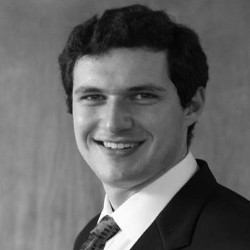Matthew Glazer

- Alumnus (Ph.D. Candidate)
- Phone: 847.467.5416
- Email: mglazer(@u.northwestern.edu)
- Address: 2220 Campus Drive, Evanston, IL 60208
- B.S., Materials Science and Engineering, Virginia Tech
I grew up in both central Ohio and Northern Virginia and obtained my bachelor’s degree in Materials Science and Engineering from Virginia Tech. During my time at Virginia Tech I took advantage of several research opportunities, the pinnacle of which was my senior research thesis. In this work, I examined an alternative nuclear fuel matrix material for use in new reactor concepts designed to actively “burn” nuclear fuel waste materials for additional energy. I also had the opportunity to work as a Summer Undergraduate Research Fellow at the National Institute of Standards and Technology and as a Materials Intern at the Mainstream Engineering Corp. I enjoy learning Chinese language and culture, and studied materials science for a semester at Tianjin University, where I returned in the summer after my graduation from VT to work as a special assistant for the Dean of the School of Materials Science and Engineering at TJU.
My research focuses on the strain evolution of anodes in lithium ion batteries during cycling. Many new anode materials (such as silicon and tin) offer the potential for large increases in both capacity and charge rate over commercially utilized graphite, but suffer from huge volume changes during cycling that can act to pulverize the anode materials and result in rapid capacity fading. Understanding the mechanisms behind these volume changes and lithiation-induced strains as well as how they evolve in real time is key to designing efficient and energy-dense architectures that can increase the lifetime of these new battery materials. In collaboration with Argonne National Laboratory, I use synchrotron based x-ray diffraction at the Advanced Photon Source to observe transient strains during the cycling of these lithium-ion battery anodes in order to understand how these processes occur and how to create highly structured electrodes which both minimize irreversible phenomena and maximize capacity and lifetime. It is my hope that this knowledge can guide further research into better battery architectures as well as make energy storage technologies more attractive for transportation and electrical grid service applications.
